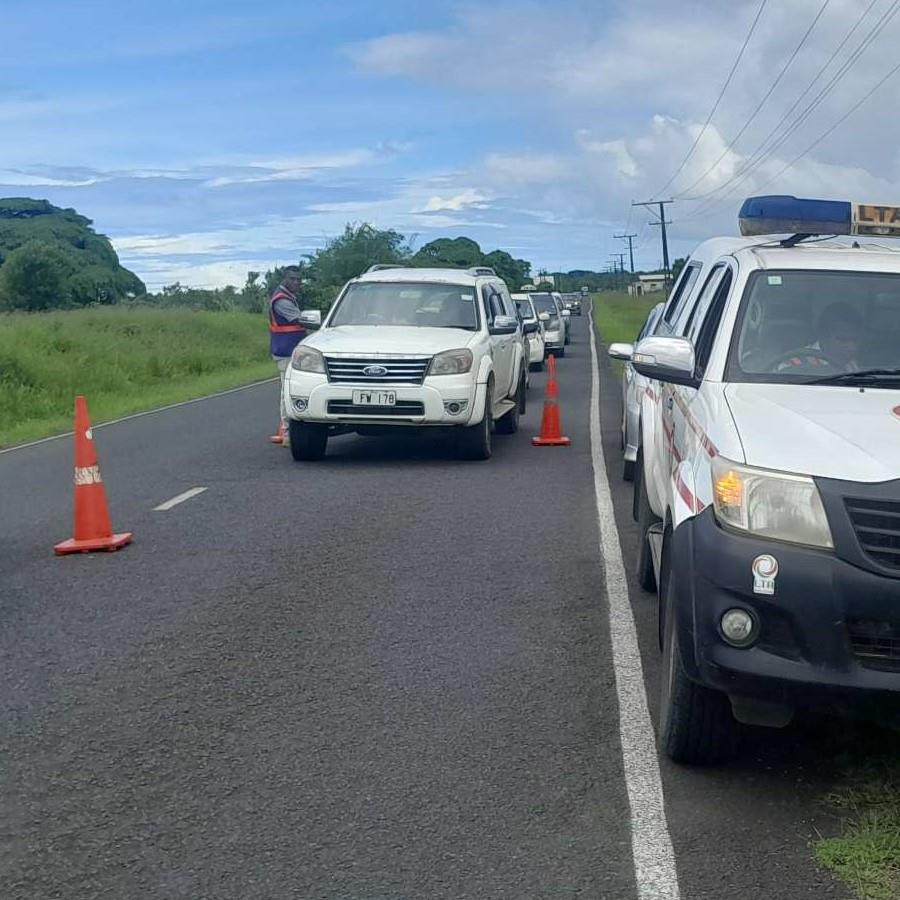SUVA, Fiji (31 March 2025): The Land Transport Authority (LTA) is calling on all drivers to maintain proper control of their vehicles by keeping both hands on the steering wheel at all times, highlighting this as a critical yet often overlooked aspect of road safety. This advisory comes in the wake of two recent fatalities involving drivers who lost control of their vehicles and veered off the road.
LTA Chief Executive Officer Irimaia Rokosawa expressed his condolences to the families of those who tragically lost their lives in recent road accidents. Among the victims was prominent radio announcer Mr. Maikeli Radua, who lost control of his vehicle on Saturday, resulting in a fatal crash in Nadera.
According to initial police reports, Radua is believed to have lost control of his vehicle causing it to veer off the road, whereby he sustained injuries. Bystanders rushed him to the Valelevu Health Centre where several attempts made by medical officials to revive him were unsuccessful.
“While common causes such as speeding, fatigue, and reckless driving are widely recognised, improper steering control is also an underlying factor that contributes to road accidents. Ensuring that both hands remain on the steering wheel may seem like a simple rule, but it is a fundamental component of safe driving,” Mr. Rokosawa said.
“We are urging all motorists to strictly adhere to this practice. It’s not just a rule—it’s a lifesaving habit.”
Mr. Rokosawa referenced the Land Transport (Traffic) Regulations 2000, Part III - Division 4 (45(1)), where it is mandated that ‘A driver while driving on a public street must drive with both hands firmly on the steering wheel unless (a) when changing gear or otherwise operating other vehicle controls; or (e) with the written approval from the Authority, for medical reasons or physical handicap but the approval may be restricted to a driver of specially equipped vehicles’.
“The regulation clearly highlights the importance of maintaining full control of a vehicle at all times. Unfortunately, it’s still common to see drivers resting an arm out the window or engaging in other distracting behaviours that compromise their ability to respond quickly in critical situations,” Mr Rokosawa said.
He noted that such practices pose a serious safety risk, as they impair a driver’s ability to react swiftly to sudden obstacles or changes in road conditions. In emergency situations, the ability to execute precise and immediate maneuvers can be the difference between avoiding an accident and causing one.
“This issue is particularly concerning when it involves drivers, who are entrusted with the responsibility of transporting passengers safely. Any lapse in control can lead to devastating consequences,” Mr. Rokosawa added.
Beyond the immediate safety implications, non-compliance with steering wheel control regulations carries a penalty. Drivers found violating this rule face a fine of $50. However, Mr. Rokosawa stressed that the true cost of non-compliance could be far greater—risking the lives of the driver, passengers, and other road users.
“Good steering control is essential for maintaining stability and direction, especially under challenging conditions such as adverse weather, slippery surfaces, or winding roads. Driving with one hand significantly increases the risk of veering off the road or into oncoming traffic.”
Mr. Rokosawa also noted that the Authority was intensifying its efforts not only through enforcement but also by raising public awareness. Ongoing education campaigns, driver training programs, and regular road safety operations are being expanded to emphasize the importance of proper vehicle handling and adhering to speed limits and other traffic regulations.
“Speeding also significantly increases the risk of losing control of a vehicle, putting the driver, passengers, and others on the road in serious danger. At higher speeds, vehicles require more distance to stop, reducing reaction time and making it harder to avoid obstacles or sudden hazards,” he said.
“Loss of control can lead to devastating accidents, including rollovers, collisions, or running off the road. Weather conditions, road curves, or unexpected events become far more dangerous when traveling too fast.
“Drivers who speed often misjudge turns, overcorrect steering, or fail to maintain traction, especially on wet or uneven surfaces. Staying within speed limits helps ensure safer journeys and protects everyone on the road from unnecessary harm.”
He added that steering control should be viewed as a foundational element of safe driving—one that is within every driver's capacity to follow.
